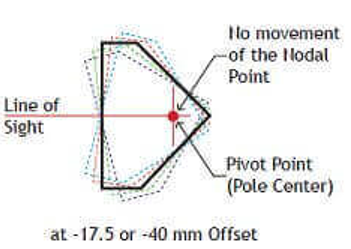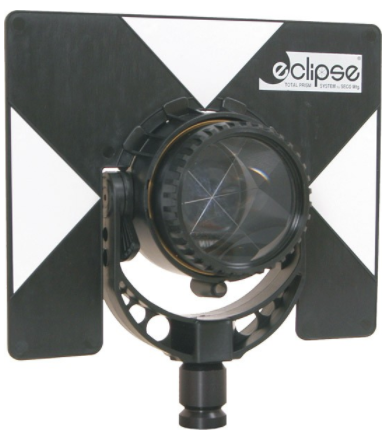Survey Prism Basics
Corner cube prisms (or retroreflectors) used with electronic distance measuring (EDM) instruments have an offset due to the fact that the transmitted light beam from the EDM takes longer to enter and exit the prism. This longer time translates to a longer distance measured. This distance is corrected by using an "offset" and/or positioning the prism in relationship to the plumb line of the prism holder. The offset is determined by multiplying the height of the prism by the refractive index of the glass used. Common offsets are 0, -17.5 mm, -30 mm, -34 mm, and -40 mm.
A nodal offset on a surveying prism is defined by the
relationship of the prism holder and prism that places the optical center of
the prism on the plumb line of the holder. This offset is the most advantageous
at close range work when the apex or center of the prism is used as a pointing target
for vertical and horizontal angle measurement. Every surveying prism has a
nodal offset. Surveying Prisms and holders that are not in the nodal position
however, can cause angular errors when using the prism apex as a target if it
is not perfectly pointed toward the measuring instrument.
To reduce pointing errors, several SECO prism
assemblies are designed with a nodal point alignment at -17.5 (for 25-mm
prisms) or -40 mm offset (for 62-mm prisms). See illustration at below:



For high accuracy surveying it is recommended to use a round prism instead of a 360o prism if you are using a robotic total station. A Nodal Point prism should be used for high accuracy traversing and layout work.
(From SECO)
View our prism products today!
